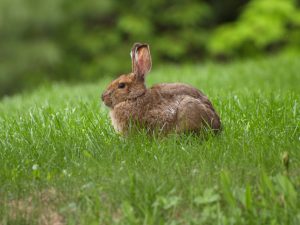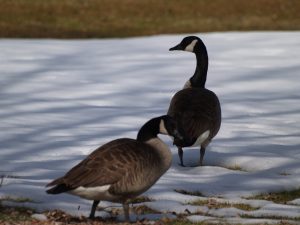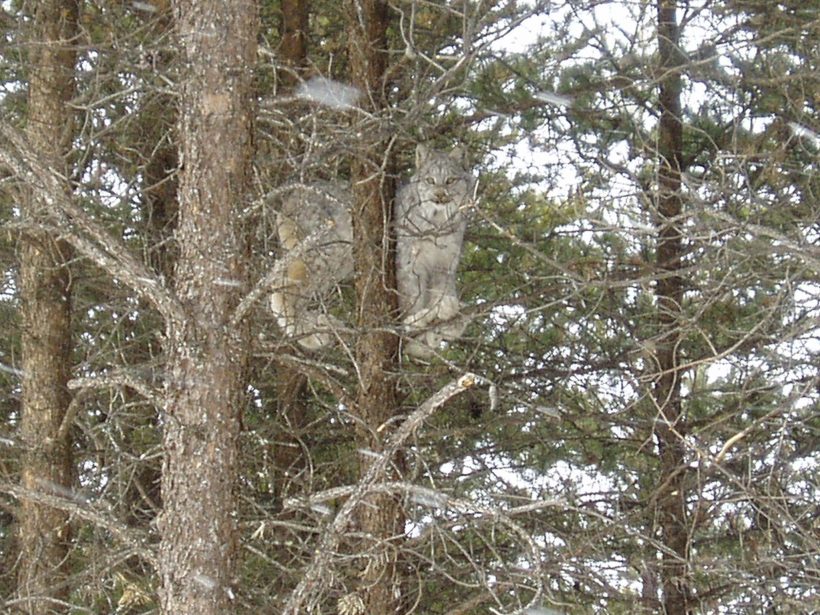

THE SUMMER THAT NEVER WAS – Part 2
Part 1 introduced the challenges – and possible benefits – of the summer that never was in 1816. It wasn’t so dramatic to all regions of Ontario but the North West was particularly hard hit. Of the 7 basic food resources required by the Ojibwa and Hudson Bay Company employees we took a look at moose, caribou and fish. In Part 2 we consider the remainder. A combination of factors – the eruption of the Tambora volcano in 1815, climatic conditions, the natural cyclic crash of the snowshoe hare and non-climatic actions of people seem all to have contributed to famine and starvation during these times.
WILDFOWL
Wildfowl, primarily Canadas and Snow geese, plus ducks were the 4th major native source of food. Normally they arrived mid-April setting off a “hunting frenzy” at HB posts providing relief from starvation and the six-month monotony of potatoes and whitefish.
Snow on the coastal marshes during nesting time resulted in fewer recruits (baby birds) which meant fewer birds returning the next spring. If the fall migration came early it meant a longer wait until the birds returned in the spring. The people were often starving in late winter eagerly awaiting the spring migration.
WILD RICE
Wild Rice was the main vegetable of the Ojibwa while the HBC men grew potatoes and some “lesser crops.” Rising high water in the fall was disastrous to wild rice and windstorms would scatter the grain before harvest.
HARES
Snowshoe hares were snared in hard times. Their skins’ value was minimal at the HBC posts. Alternate freezing and thawing hampered snaring. Most of the peaks in human starvation at Osnaburgh House appeared the year after the 8 to 9 year cycle crashed. Their scarcity could precipitate famine.
FURBEARERS
Marten, otter, fisher, lynx – and the very important beaver, allowed the Ojibwa to purchase iron knives, hatchets, guns, blankets and rum. At Lac Seul, when the beaver were depleted, muskrats “assumed an increased economic significance.” Unlike most furbearers, the muskrat and beaver provided food.
POTATOES
As a rule, natives in the early 1800s in the NW did not grow potatoes. It was, however, a staple of the HBC posts. At Osnaburgh they were planted early in May and harvested mid-to late-October. The crop suffered after hot, dry summers and an early frost damaged their quality. Spring frosts may have reduced the crop but were not as serious. Unidentified grubs periodically damaged the crop. As long as they had enough for themselves, the HBC gave starving Ojibwa fish and potatoes.
The starving time of winter could be alleviated or avoided – if large game and hares were abundant, if spring came early. “The converse was true.”
THE 1815-16 FAMINE
January and February 1815 were typically dry and cold. This continued into April which, coupled with northerly winds, delayed the waterfowl migration. The HB Post Master commented that May was much more like March. The main body of geese arrived a month late on May 14. May concluded warmer than normal; June started in the same manner but ended “rainy and cold”. August ended with a sudden cooling with rainy stormy weather accompanied by NW and E winds. This persisted until mid-September. By late September “it was apparent that both fall fishing and the wild rice harvest had failed” due to high water levels.
At Osnaburgh House the “fall starvation was unusual” but the early arrival of fall geese on October 1 was encouraging. Actually, this worsened matters. The early migration meant that the winter starvation would last longer.
A poor potato harvest left the HBC post with little extra to spare for visiting Ojibwa.
It snowed October 22 and the lake froze “a trifle early” on November 7. The fall and ice fishery failed and the first half of December was very cold; the latter half mild and starvation was first mentioned in the daily journals. Then February was colder than usual. By the end of March potato rations for the HBC people was reduced and “everybody had been sent out to hunt or fish since the daily ration was one small fish.” One fellow, “reduced to eating fish offal, became very sick”. Few natives visited Osnaburgh House either because they were too weak to travel or they had heard there was no food to be had.
April was cold which delayed digging the potato garden by two weeks. The waterfowl migration, 3 weeks late, broke the famine May 4th. Sturgeon spawned two weeks later (May 29).
June 1816 was very cold with hard frosts early in the month and at the end badly damaging the gardens. One-quarter inch of ice was in the bottoms of canoes. And the lakes fell six inches in 3 weeks. July was cool and rainy with mostly NW winds. Water levels remained low.
Snow fell on August 18, an unheard-of event. With continued cold the geese migrated a month early mid-September. The ground froze 3 weeks early and by October 3 the potato crop was frozen in the ground. Yet they still managed to harvest a large crop of “indifferent quality” potatoes. The Rye crop never ripened. The lake froze early and cold weather continued to mid-December when it became mild and snowy. The remainder of the winter was “cold with heavy snowfall”. Apparently the 1816-17 starvation only touched the native population and many visited HB posts for handouts.
As mentioned earlier, climate was not the sole cause of famine and starvation. Between 1819 and 1820 the number of moose and caribou traded at Osnaburgh House rose dramatically. The authors speculate that enough hunters had perished, reducing the predation pressure on the herds. Plus deep snow in 1816-17 may have also reduced hunting pressure. The moose and caribou persisted until the mid-1820s before succumbing to hunting or other pressures.
In summary, climate impacted water levels, snow accumulation plus temperature fluctuations which affected wild rice, fish, potatoes, and wildlife. Non-climatic contributors such as increased forest fires and over hunting (due to the fur trade), cyclic population crashes of hares and injury, sickness or death to the hunters also impacted wildlife. FYI.
AND FINALLY…
“Nature does not hurry, yet everything is accomplished.” Lao Tzu
